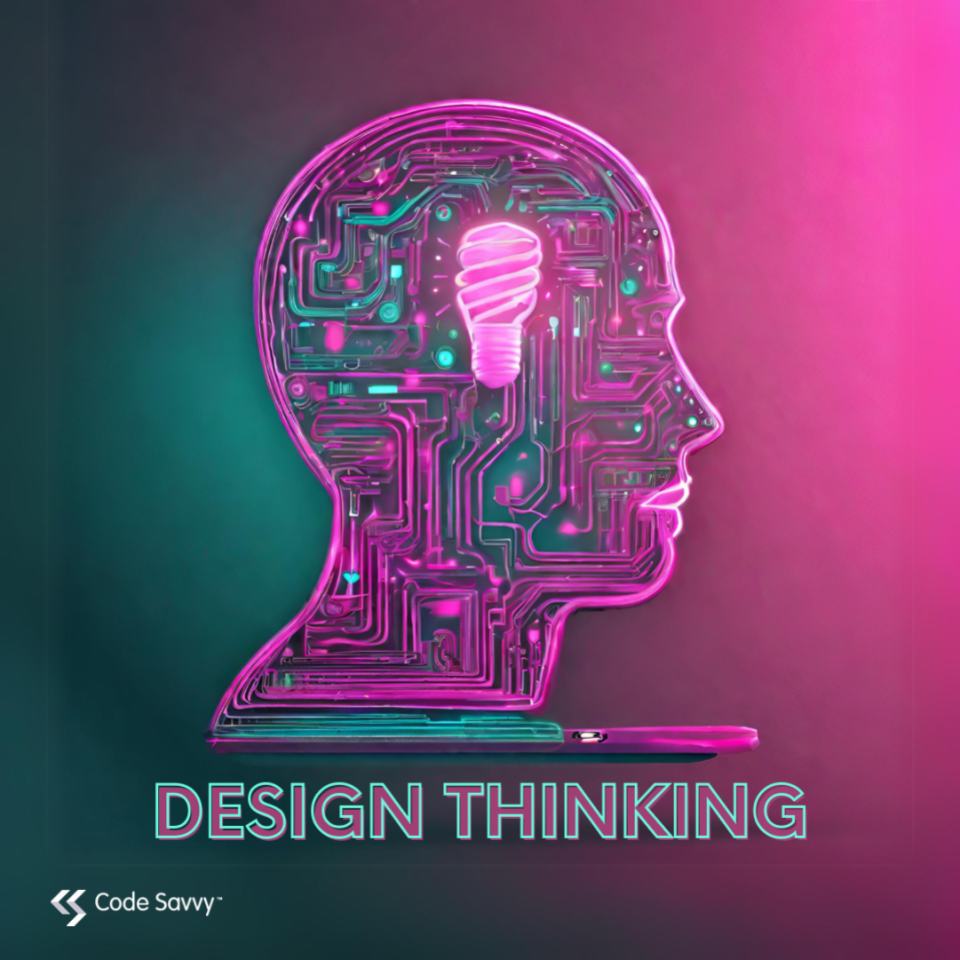Design thinking is a creative problem-solving process that is user-centric and iterative. It involves deeply understanding the user’s needs, brainstorming innovative solutions, prototyping, and testing. It helps create solutions that are not just functional but also meaningful to the people who use them. It’s all about innovation and empathy in design.

One of the ways that design thinking interacts with the user is by empathizing and understanding their needs, desires, and challenges. It involves talking to people, observing them in their natural environment, and truly understanding their experiences and feelings. This empathy work helps designers to create solutions that resonate on a human level. It’s like putting yourself in someone else’s shoes to understand what they need and why.
When it comes to ideation in design thinking, it’s all about generating a range of ideas without the judgment or limitations. It’s a brainstorming phase where creativity flows freely. Designers use techniques like mind mapping, sketching, and collaboration to come up with innovative ideas. The goal is to explore different possibilities and think outside of the box.
In design thinking, prototyping and testing are key steps in the process. Prototyping is when you create a tangible representation of the solution, whether it’s a physical or digital model. This prototype is then tested with real users to gather feedback and insights. By observing how users interact with the prototype, designers can identify areas for improvement and make iterative refinements. The process is all about learning from feedback and continuously iterating until the solution is perfect!
When it comes to design thinking, teamwork and mindset go hand in hand. It is essential to have a collaborative mindset in order for effective teamwork. It involves valuing and respecting each team member’s contributions, actively listening to different perspectives, and building a culture where open communication and trust are important. By embracing a collaborative mindset, teams can leverage the collective intelligence and creativity of the group. This can then lead to more innovative and impactful solutions. When we use design thinking we bring a positive and collaborative mindset to the table and create amazing work!
A great example of how design thinking can be successful is how the company AirBnb was created! The founders of this company were struggling to pay their rent when they came up with the idea of renting out air mattresses in their living room to attendees of a design conference. They quickly realized the potential of their concept and used design thinking to transform it into a platform to connect travelers with unique accommodations around the world.
AirBnb has become a global success story in the sharing economy. It’s a testament to the power of design thinking in creating innovative solutions that truly meet user needs. It shows that with a bit of creativity and a lot of empathy, we can create solutions that resonate deeply with user’s needs. To apply design thinking in your own work, start by really listening to your users and let their feedback guide your iterations. The book Change by Design by Tim Brown is a great resource for applying design thinking in your own life. Dive in and explore and you’ll be applying design thinking to your everyday life in no time!
If you’d like to learn more and get some time to explore, hands-on, with us… we have our annual Design Thinking Workshop on February 10th at Minneapolis College AND virtually at 1pm. REGISTER TODAY!
Sources
- https://www.interaction-design.org/literature/article/what-is-design-thinking-and-why-is-it-so-popular
- https://en.wikipedia.org/wiki/Design_thinking
- https://designthinking.ideo.com/
- https://www.google.com/url?sa=t&rct=j&q=&esrc=s&source=web&cd=&ved=2ahUKEwjT7rrdpJCEAxXLrokEHfJwDA0QFnoECBEQAQ&url=https%3A%2F%2Freview.firstround.com%2FHow-design-thinking-transformed-Airbnb-from-failing-startup-to-billion-dollar-business&usg=AOvVaw2p1OEvEu33qKfYIecVqgPH&opi=89978449